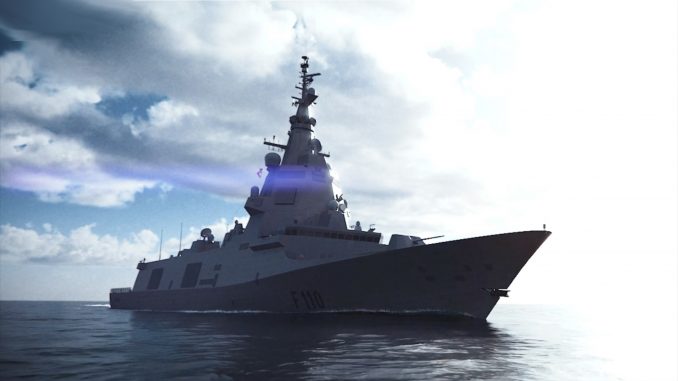
The F-110 frigates have the difficult mission of replacing the F-80s, which have provided such good service, returning to the Navy part of the anti-submarine capabilities that we have neglected for decades. To do this, they use an anti-submarine suite provided by Thales and SAES that includes top-level equipment, on par with navies such as the US Navy or the French Marine Nationale. Thanks to this, they will constitute the core of a force that will be completed in the future with the capabilities provided by the S-80 submarines and future maritime patrol aircraft, manned or not. Although the next few years are far from promising, as there is a lot of work to be done – as much as there has been institutional neglect, the F-110 frigates constitute a great first step.
In January 2013, the Military Capabilities Objective 2013-2016 which included the need for five new frigates to replace the six of the Santa María class, at that time with more than 20 years of service in their frames and already affected by the cut in investment in Defense after the crisis of 2008. It was the consequence of a need identified by both the Navy and the rest of the NATO navies, since one of the keys of these years and those to come in relation to naval warfare will, without a doubt, be the proliferation of submarines of all types and conditions[1]. This is why the five ships have been conceived to be multipurpose ocean escorts, but with the emphasis placed on anti-submarine warfare (ASW) and optimized according to the Ministry of Defense to operate in high intensity scenarios, as well as for war. coast.
From the beginning, the program has been considered strategic, in the broadest sense of the term. It is logical, since its success is essential both for the Navy to be able to fulfill its tasks, for Navantia to maintain unique know-how and capabilities and, more broadly, for the Spanish naval-military industry as a whole to continue to be a reference. Let's think that for Navantia alone it represents around 20 million hours of work, which translated into jobs is equivalent to maintaining a substantial part of the almost 4.000 workers on staff for several years. In fact, according to the company, the construction of the series will involve more than 500 Spanish companies, ensuring 9.000 jobs throughout this decade.[2]. Let us not forget that the direct investment in the program is valued at more than 4.300 billion euros[3]. Furthermore, regarding the platform, 64% of it is the responsibility of Spanish companies, rising to 87% if we expand the range to European companies.[4], percentages in both cases are quite high, because although technological and industrial sovereignty is necessary, complete autarky is as impossible as it is undesirable.
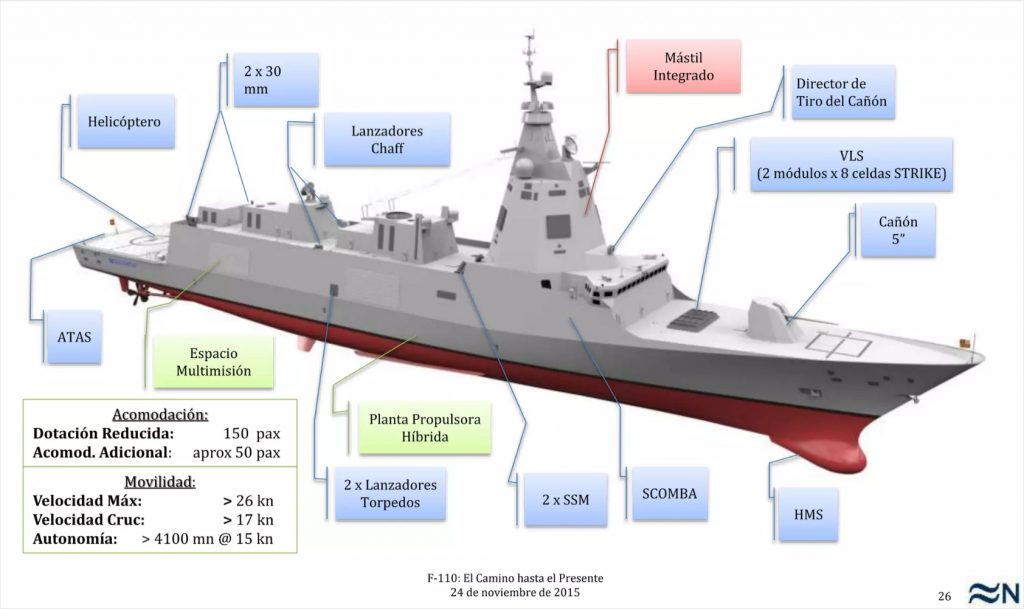
Following the usual process in the Navy, which we talked about in these pages a few weeks ago[5], already in 2012 the operational need to replace the F-80 had been identified and a prospective study of the strategic scenario that its replacement should face, between 2025 and 2060, was carried out. Three mission profiles were established: 1) High intensity missions (protection of a naval force); 2) Medium intensity missions (crisis management and protection of maritime traffic) and; 3) Low intensity missions (maritime security operations)[6]. Subsequently, in September 2013, a team was organized dedicated to drafting the General Staff Requirements (REM) supported by dozens of EMA and JAL officers, which culminated with the aforementioned document in December of that same year. However, it was considered insufficient, so up to five revisions were carried out from January to July 2014 before AJEMA approved the final version on July 16.[7]. From that moment on, the program suffered a certain hiatus before the technical definition was finalized and the Contract Specification was prepared.
Already in April 2019, the Execution Order was formalized with Navantia, while in parallel the purchase of all key components from the United States was being negotiated with the US Navy. Let us not forget that, although the F-110 frigates will have a high degree of national technology, the collaboration between Navantia and Lockheed Martin continues, which has borne such good results in the past and which our flagship company hopes to be able to repeat in the future. coming years despite the setbacks suffered in recent international competitions, such as the Australian or the American one. The crisis caused by the pandemic, which hit Navantia hard by preventing its staff from working normally, led the company to request a delay in the delivery dates of design reviews from the Ministry of Defense and the Navy in mid-2020. , both preliminary and critical. It was not the only project affected by COVID-19, Well, the S-80 class submarines also accumulated new delays for the same reason[8].
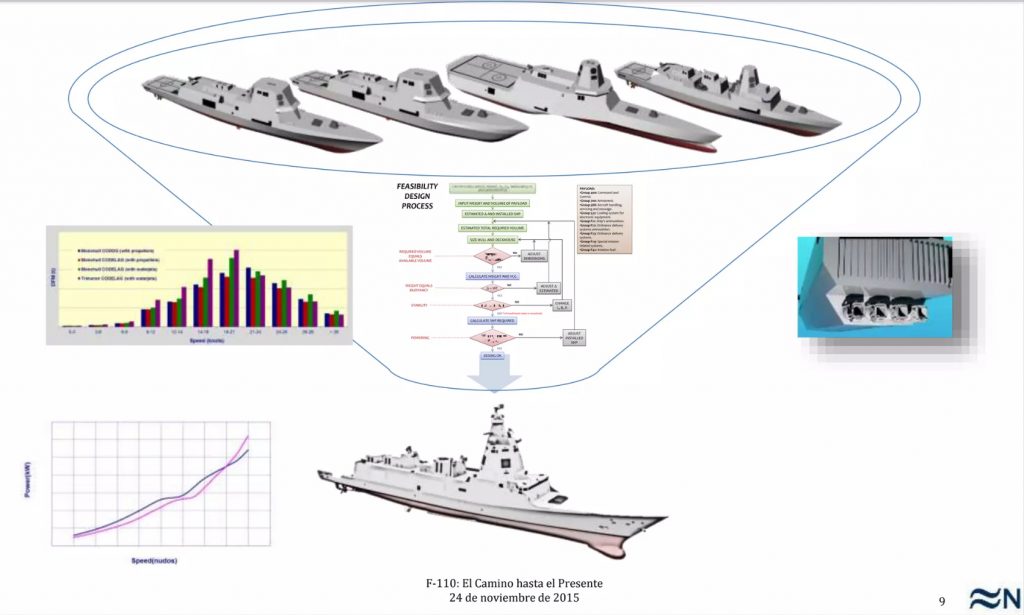
Thus, on May 21, 2021, the Preliminary Design Review (PDR or Preliminary Design Review)[9] after the documents were examined by different working groups made up of representatives of the Ministry of Defense and Navantia in which aspects such as cybersecurity, the integrated services system, multi-mission space or the famous “digital twin” were touched upon, to which one day we will dedicate a full article. After all, the F-110 frigates will be the first ships of the Navy to have this tool, which promises significant savings in maintenance, as well as minimizing mechanical problems, increasing the availability of these ships. Subsequently, between June 21 and 22, 2022, the same was done with the Critical Design Review (CDR or Critical Design Review)[10], holding a series of plenary sessions attended by representatives of the Ministry of Defense, the Navy and Navantia, but also the US Navy, as well as some top-level suppliers such as Lockheed Martin, Indra, Thales, Ingeteam or Ferri. With the approval of the CDR, the design stage came to an end after three years of work.
Previously, however, the construction of the first pilot blocks of the F-111 had begun, specifically in April, the milestone being made official during an event led by the President of the Government, Pedro Sánchez, held in Ferrol. In addition, since a year before (May 2021) progress had been made in the construction of both the Ground Systems Integration Center (CIST) building for the F-110 frigates[11], as in the manufacture of the integrated mast prototype, one of the most complex parts of the ship and which had to be installed in the aforementioned building[12]. Since then, the construction process has continued normally, although there are still years left until a more or less tangible result is seen, since according to the latest contractual schedule, the keel laying of the F-111 “Almirante Bonifaz” has not been completed. It will be produced until November 2023, while the launch is scheduled for December 2024. If no problems appear in the process, delivery to the Navy should occur in November 2026 in the case of the first unit, and in August 2031 in the case of the F-115 “Barceló”.
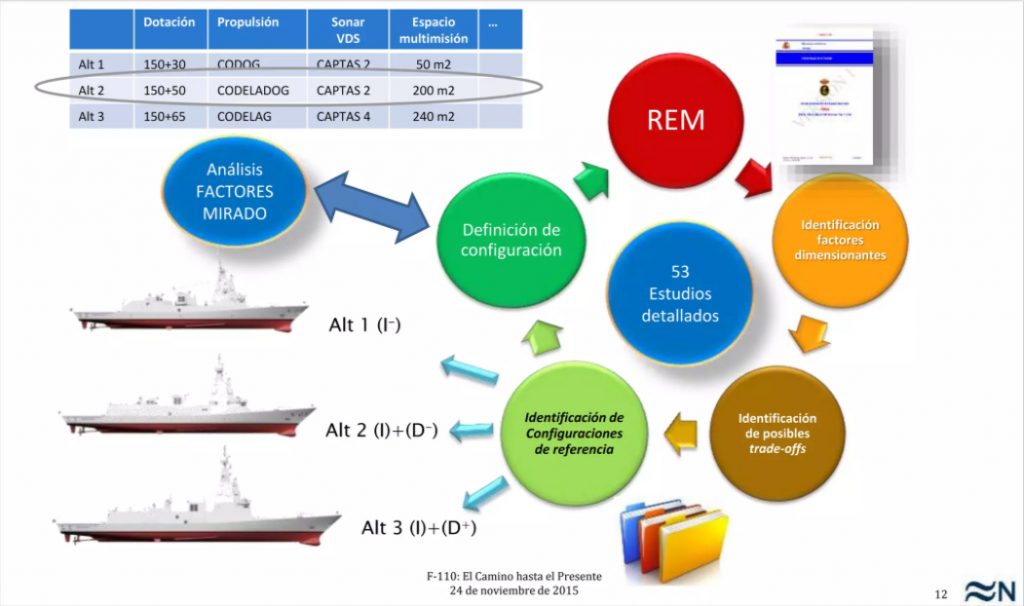
An increasingly worrying scenario
In recent years the military differential north and south of the Strait of Gibraltar has only narrowed. If a few decades ago Spanish military superiority with respect to Morocco or Algeria, especially in the air-naval field, was overwhelming, today it is much more questionable, as we have explained on occasion.[13]. Furthermore, since 2008 a sort of “perfect storm” has been occurring, as a result of which the effects of three different phenomena have been added but which, together, have taken Spanish weapons to their lowest level in decades.
The first of them has to do with the political balances within our state, fruits of a society that has not finished internalizing the importance of Defense. The political class – although there are obviously notable exceptions in all parties – is rarely interested in this section and ignorance, even among those who pay the most interest, is evident. This being the case, it is difficult to reach political agreements regarding such a delicate issue, which is used as a campaign object rather than as the meeting point that it should be. It is not surprising therefore that on too many occasions it is industrial reasons – easy to capitalize politically due to the jobs generated – that determine Defense Policy and not the other way around. Nor does it mean that the level of spending has remained at minimum levels since 1986, when it reached its ceiling.
The second factor has to do with the 2008 crisis and its consequences, which have been felt for more than a decade and have prevented the planning and investment cycles from being met, delaying some programs – the F-110 frigates are a good example of this – and causing the decommissioning of many systems with no replacement in sight, with the consequent loss of capabilities. In fact, as these lines are written the last of the P-3 Orion maritime patrol aircraft is being decommissioned, leaving Spanish waters more unprotected than they already were.
The third element in this terrible equation is foreign to us, but it affects us enormously. We talk about the arms race between Morocco and Algeria and their competition for the position of hegemon in the north of the African continent. A competition that, although it has endogenous causes, is sponsored by the transition from a unipolar and stable world to another in which competition between powers will be the norm. In this sense, a Morocco that is increasingly a closer ally – and client – of the United States and that has financing from the Middle East, is the vector used to compete against the influence of Russia or China in the Maghreb. As a result, in recent years both rivals have embarked on a series of acquisition and modernization programs that have ended up undermining the military superiority that Spain maintained, while dynamiting strategic stability in the Strait area. This term, which is typical of Strategic Studies and which we have explained previously[14], is key to understanding what is to come. Strictly speaking, a situation of strategic stability is one in which none of the actors has incentives to attack the rest.
In this case, while Spain maintained great superiority, Morocco had no incentive to pursue objectives through military means, such as, for example, the annexation of autonomous cities. She made a very tenuous attempt during the crisis on the Perejil islet in July 2002, being convinced by the Spanish show of force that she was not going to get anywhere that way. Since then, it has been waging a growing campaign in the gray zone, while investing in its Armed Forces. As a result, we have reached a situation in which Morocco has less and less to fear from the Spanish response and, as a consequence, more incentives to opt for a military solution. This, obviously, does not necessarily mean that Rabat will order an invasion of Ceuta and Melilla, but it does change the scenario and greatly complicates the Spanish options, as would an open war between Morocco and Algeria, something that is far from impossible.[15].
The most urgent thing, however, It has nothing to do with the possibility of war., but with the loss by Spain of the control over the waters of the Balearic-Strait-Canary Islands axis[16], our main concern no matter how much we emphasize multinational missions and collective defense. Fortunately, this is something that has already begun to change with documents such as the 2021 Defense Policy Directive.[17] and the Concept of Employment of the Armed Forces 2021 (CEFAS 2021), which speak of the “search for “a more reasonable degree of strategic self-sufficiency and national resilience” and the consideration of “non-shared threats” – those that are perceived and must be faced by Spain autonomously[18].
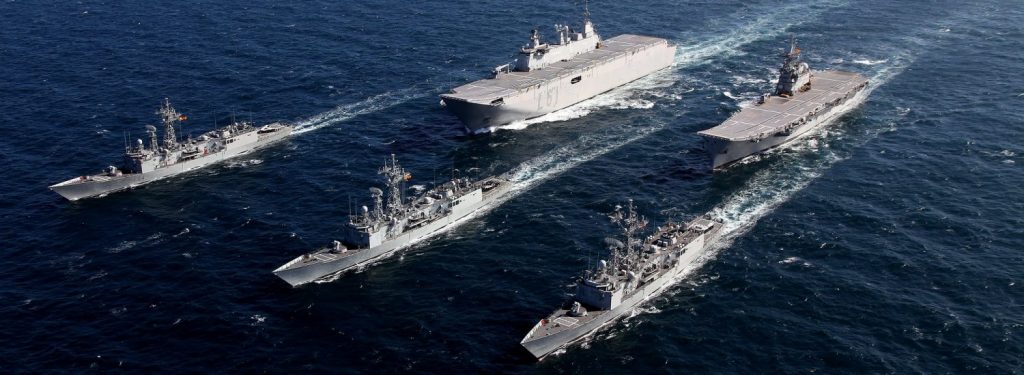
Despite this, the harsh reality is that while our neighbors are arming themselves and investing enormous amounts in equipping themselves with new capabilities, Spain has done nothing but renounce some criticisms and that it will take years to recover them, given the time difference between the awareness of the problem, the approval of the measures intended to alleviate the situation and the time necessary to implement them. Something incomprehensible for a country whose coasts pass some of the busiest and most important maritime routes in the world, several of the submarine cables on which communication between Europe and America depends or the underwater pipelines on which our energy supply depends, among many. other things[19] – let us not forget that there are open disputes with Morocco regarding the Exclusive Economic Zones –[20].
However, our neighbors to the South are not the only source of concern. As we know, in recent years the Russian Navy has significantly reinforced its presence in the Mediterranean, recovering an imitation of what was the 5th Eskadra soviet. In addition, it has increased investment in its underwater weapon, providing itself with modern and capable vessels. Thus, despite the setback in terms of credibility caused by the war in Ukraine, in which he lost the flagship of the Black Sea Fleet, his arguments in the submarine field remain considerable. Furthermore, incidents such as the attack on the gas pipeline Nord Stream, which are suspected to be the work of elements of the 29th GUGI of the Northern Fleet, although attribution is impossible, they force us to remain more alert if possible. Not in vain, at a time when improvements in ISR (Intelligence, Surveillance and Reconnaissance or Intelligence, Search and Reconnaissance) due to the proliferation of patrol aircraft, drones and satellites, both military and commercial, will be under the surface where the naval forces try to do their work, since that is where they have the best guarantee of success.
All of the above, taken together, forces Spain to react quickly and forcefully, especially in the maritime domain and, in particular, in everything related to submarine and anti-submarine warfare. To do this, it will have to be equipped with new maritime patrol aircraft, both manned and unmanned, increase the S-80 series or look for a complement to these - since four units are frankly insufficient -, perhaps also install underwater listening systems in key points of our waters. and it may be that, taking advantage of the MLU of the F-100, equip them with a towed sonar although it is less capable due to the available space and weight reserve than that of the F-110 frigates. In addition to all this, the F-110 program will have to be brought to fruition, since much of the Navy's ability to patrol below the surface in the coming decades will depend on them and their anti-submarine suite.
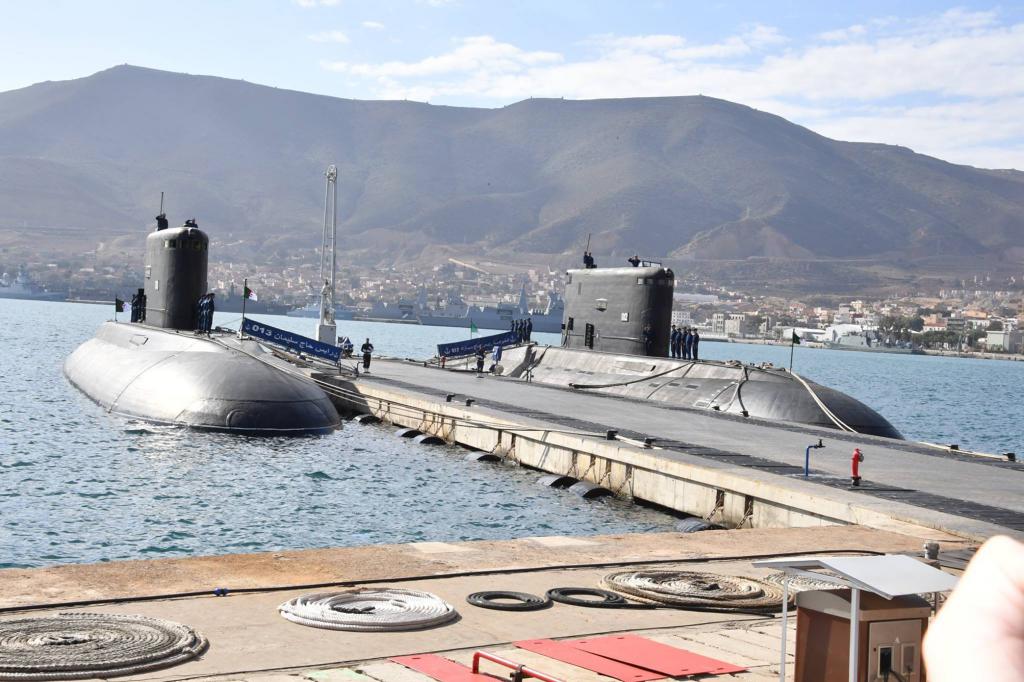
F-110 frigates, between continuity and revolution
Before getting into the subject and fully addressing the anti-submarine issue, we believe it is appropriate to dedicate even a few lines to talk about both the concept of ship chosen for the F-110 program and its main technical characteristics and the innovations they provide compared to the F-100. , which they will complement until the latter are removed from service, in the middle of the century.
The title chosen for this section is not the result of chance. At first glance, the future class Bonifaz is not too much different from the F-100 or any other frigate launched between the end of the 7th century and the beginning of the XNUMXst century. Its lines are perhaps somewhat cleaner, especially on the foredeck and superstructure, but otherwise there are more similarities than anything else. Despite this, it is a very different ship from its predecessors, both due to the type of propulsion chosen and the SPY-XNUMX radar that will be installed on the integrated mast, the inclusion of a “digital twin” or the superlative capabilities of its suite. anti-submarine, all of which tells us about a ship of a very different generation.
The F-110 frigates, according to each and every one of the brochures and presentations published to date, have been designed for oceanic operations and in a coastal environment, to operate with a reduced crew, benefit from low operating and support costs. to the life cycle, have a high level of survivability, modular capacity and great versatility, promising to be the perfect vessel, at least on paper. To do this, in addition to resorting to automation, which will allow its crew to be reduced by 65 souls compared to the F-80, it will have a multi-mission space with modular capacity, in line with ships from other navies, such as the Type 26 from BAE Systems, the SIGMA 11515 of DAMEN or the FTI (Frégate de Défense et d'Intervention) of Naval Group and will integrate anti-aircraft sensors and electronic warfare equipment or first-class anti-ship weapons, although its main function will be that of an anti-submarine ship.
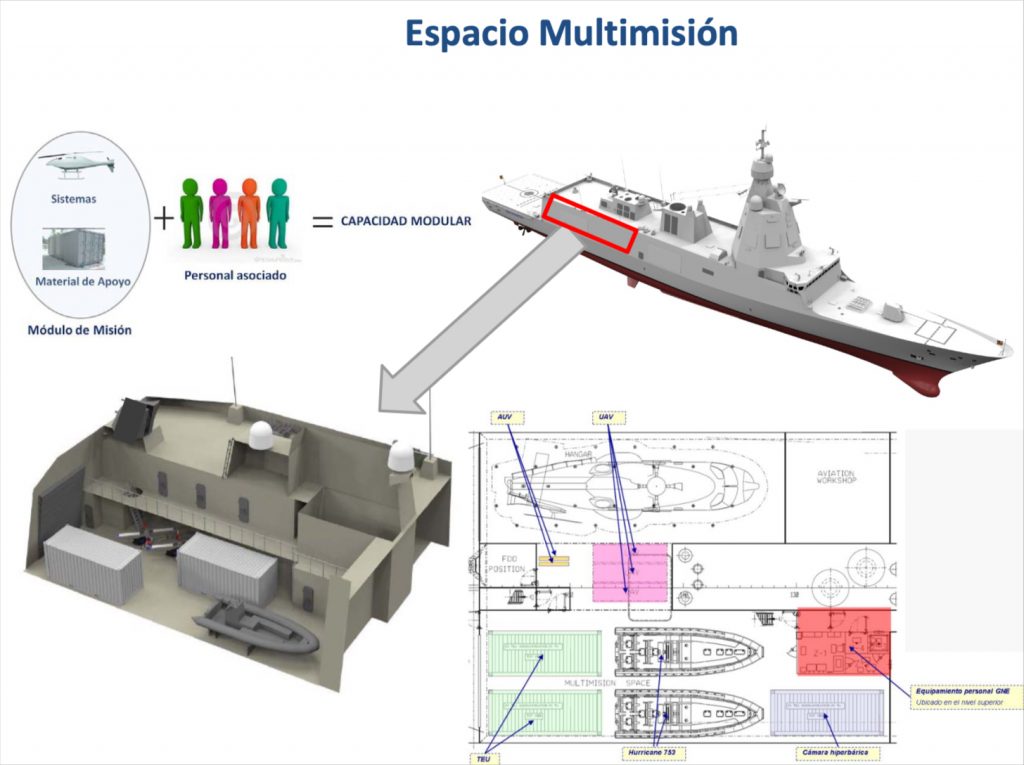
Regarding the integrated mast, its feasibility began to be studied in 2012, for which a contract of 1,69 million euros was awarded to Indra and Navantia.[21]. Subsequently, a new contract of 135,3 million euros would be awarded to the PROTEC 110 joint venture, formed by both companies, for the development and integration of sensors on the mast and the SCOMBA combat system, which would undergo several modifications to add new capabilities. , from the integration of machine guns to that of a second commercial navigation radar, to the integration of the ScanEagle UAV or the direction of torpedo launches, among others.[22]. It will allow, in a structure that offers much greater discretion than others such as those mounted on the F-100, to integrate everything from the IFF interrogators to the lightning rod and from the electronic warfare equipment to the communications, positioning and SPY-7 radar antennas. This is, obviously, the jewel in the crown, although we will not go into detail as there is an article in preparation about it.
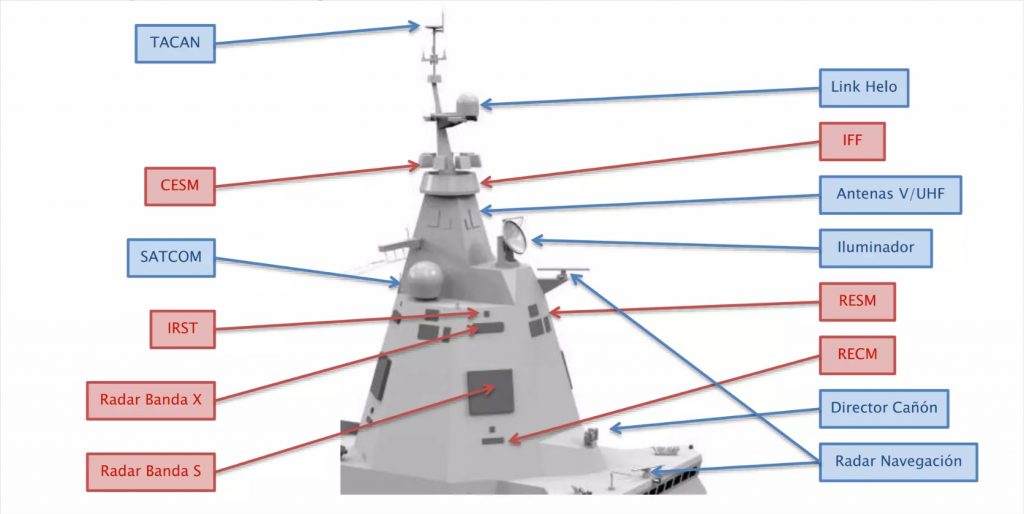
In addition to this, there is the famous “digital twin”, which will allow Navantia engineers to manage the platform's critical systems from the company's facilities, providing support to the crew if necessary. In addition, it will make it possible for the vessels to be perfectly monitored at all times, getting ahead of possible mechanical problems thanks to predictive maintenance. This, in turn, will increase not only the reliability, but also the availability of the ships, a crucial aspect given that there will only be five – compared to six F-80s – and at the moment there is no prospect of this changing.
In summary, although in principle their appearance is certainly conventional, without aesthetically striking solutions such as inverted bows or multihulls, the F-110 frigates will be ships far superior to those of the previous generation, incorporating cutting-edge technologies.
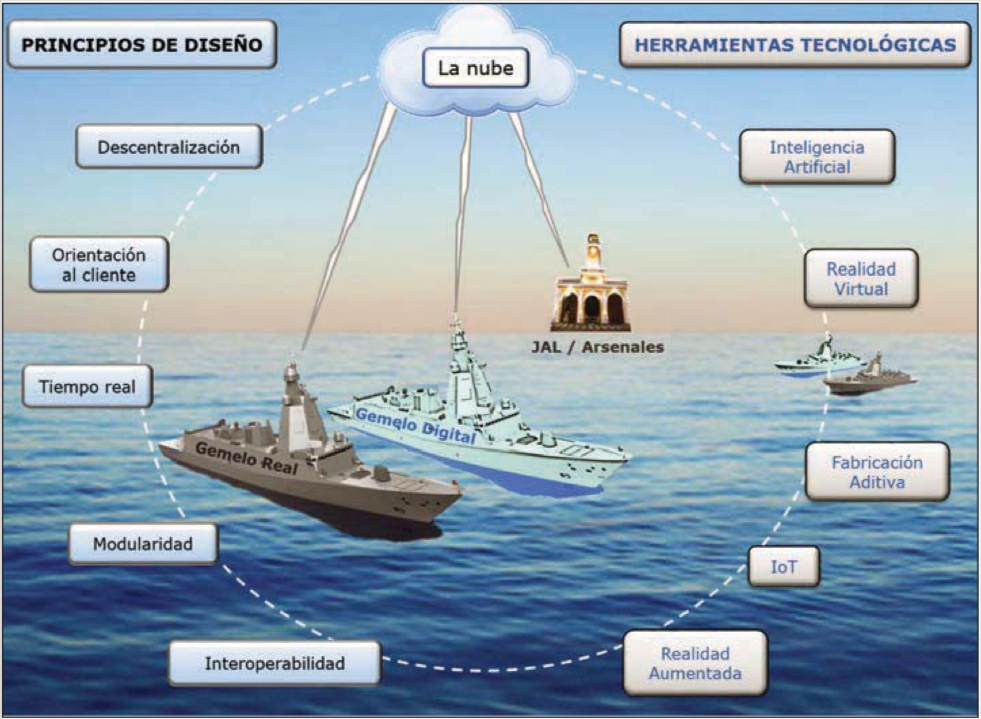
The anti-submarine capabilities of the F-110 frigates
Now, after this long but necessary introduction, we go straight into explaining what the components of the anti-submarine suite of the future F-110 frigates will be and, based on them, their capabilities. To do this, and first of all, we will list the components of the ASW set, the responsibility of which is mostly the Spanish company SAES and the French company Thales. Later, we will explain what is known about them, taking into account that much of the information, for obvious reasons, is not public. What is known is that the investment destined for sonars exceeds 160 million euros, since that is the amount of the contract signed between Navantia and Thales[23].
BlueMaster Hull Sonar (UMS 4110)
The BlueMaster cylindrical bow sonar (UMS 4110) is part of the family of hull sonars offered by the French giant Thales, being the most powerful option in a range that also includes the BlueHunter (or KINGKLIP Mk2) used by the Gowind corvettes or by the future French frigates FDI (Frégate de Défense et d'Intervention) and the BlueWatcher (UMS 4120) installed on the French frigate “Surcouf” and on several corvettes acquired in recent years by different Asian navies[24]. In total, in recent years, they have delivered a not inconsiderable figure of more than 150 units, which gives an idea of the level of acceptance they have in the market.
Despite being an original design by the French Thales Group, thanks to a Technology Transfer (ToT) program signed with the Spanish SAES – in which Thales participates, linking both industries – it will be manufactured in Spain. It is not the only aspect in which the two companies collaborate, as the agreement will allow SAES to be responsible for the integration of the entire sonar suite, in addition to participating in the development of some functions of the sonar processing software and services. tuning, testing and training, for which a significant financial investment had to be made. Furthermore, thanks to the signed contract, key underwater acoustics technology will be transferred to the Spanish industry, being especially important that related to the TUUM-6 underwater digital communication system and acoustic sensors.
The selection of the French system, over other possibilities such as L3Harris (Edo Corporation) – remember that it was responsible for the cylindrical bow sonar of the S-80 submarines, a relative of those installed on the Arleigh Burke[25] – was carried out in 2019, after several years of conversations with the French manufacturer[26]. It had all the operational and industrial logic, since as we have said, Thales owns part of the capital of SAES, which facilitates transfers that would otherwise be difficult to achieve. Furthermore, Spain has been using the French firm's products for decades, its sonar systems are in service or have been chosen by Spain's main allied navies (United States[27], France, the United Kingdom, Italy...) and in all cases they have demonstrated outstanding capabilities. Thus, the F-110 frigates will be comparable in everything to the FREMM ASW, perhaps the best anti-submarine ships today, since they have resorted to similar systems, or to the future class frigates Constellation of the US Navy.
Regarding its construction, SAES will be in charge of the complete manufacturing of the transducers, the assembly and integration of all of them forming the cylindrical sonar, the acceptance tests and the delivery to the shipyard of each of the five sonars, all following the Plan of Training agreed with the company Thales.
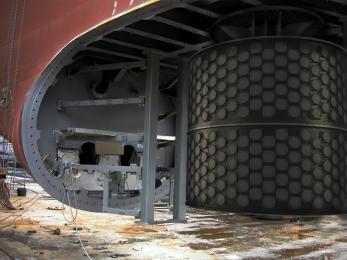
This sonar will provide the F-110 frigates, according to the design company[28], the ability to detect, locate and classify submarines in both rough sea states and shallow waters. It can operate simultaneously on two active channels, one for anti-submarine warfare and the other for searching for obstacles, in addition to having passive channels dedicated solely to listening or tracking torpedoes.[29]. It is claimed that it is particularly efficient when it comes to detecting submarines in difficult conditions, such as restricted waters, as well as that the effects of reverberation are very limited, avoiding false positives or signals being masked. Furthermore, it has been designed – we will talk about it later – in such a way that it is fully interoperable with the CAPTAS-4 towed sonar, taking advantage of the advantages offered by multistatism.[30]. To do this, it works in active mode at frequencies between 4.1 and 6.1 kHz, with a pulse length greater than 4 s and FM, CW and COMBO modes. In the case of working passively, the frequency ranges between 1 and 6.1 kHz. All of the above allows detection distances of more than 35 km in normal conditions, although we already know that anti-submarine warfare is very complex in this aspect and in certain conditions the state of the sea or the enemy's expertise manage to reduce them no matter how good they are. whatever the equipment and no matter how well prepared the operators are.
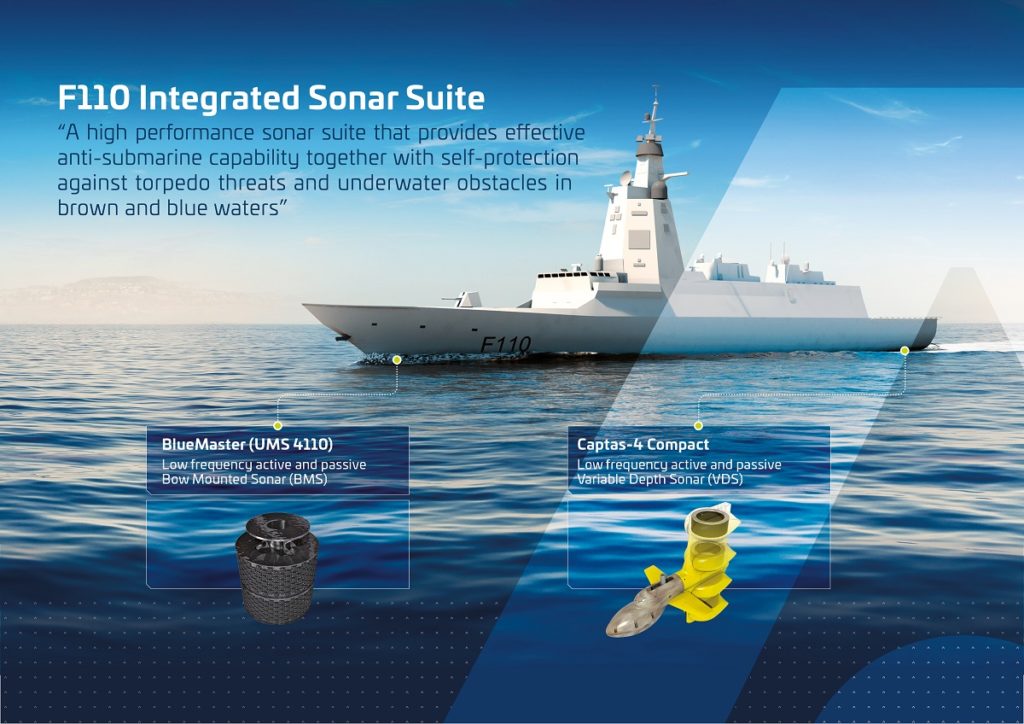
CAPTAS-4 Compact towed sonar
Like the UMS 4110 bow sonar, the UMS 4200 CAPTAS towed sonar from Thales Underwater Systems has also been a big seller. Available in three variants (CAPTAS-1, CAPTAS-2 and CAPTAS-4), with different capacities and sizes, the French company has managed to install more than 80 systems in recent years.[31]. Among the most significant contracts, in addition to obviously those achieved with the Marine Nationale French, there are those of the Type 23 y Type 26 British, the T-23 Chileans and of course, the future class frigates Constellation North American[32].
The CAPTAS-4 variable depth towed sonar is an old acquaintance of these pages, Well, some time ago Federico Supervielle Bergés already dedicated a specific article to him[33] in which he also explained the fundamentals of underwater acoustic detection. It is a system that works at low frequencies and in dual mode (active and passive). It has, at least nominally, a range of up to 150 kilometers, in reference to the second convergence zone in the Atlantic Ocean.[34], which does not mean that it is capable of detecting submarines at these distances in other conditions. In addition, and according to the manufacturer, it is very suitable for the detection of modern diesel-powered submarines in coastal water environments. To do this, CAPTAS-4 has active, passive and combined modes, as well as analysis functions for captured emissions and torpedo warning. Its declared operational limit would reach sea state 6 (very thick, four to six meters of wave), and the antenna cable could be extended to depths of more than 200 meters if its operators consider it necessary. Taking into account the operational levels of modern submarines and the width of the sound channels, this should make it possible to monitor a non-negligible part of the underwater environment.
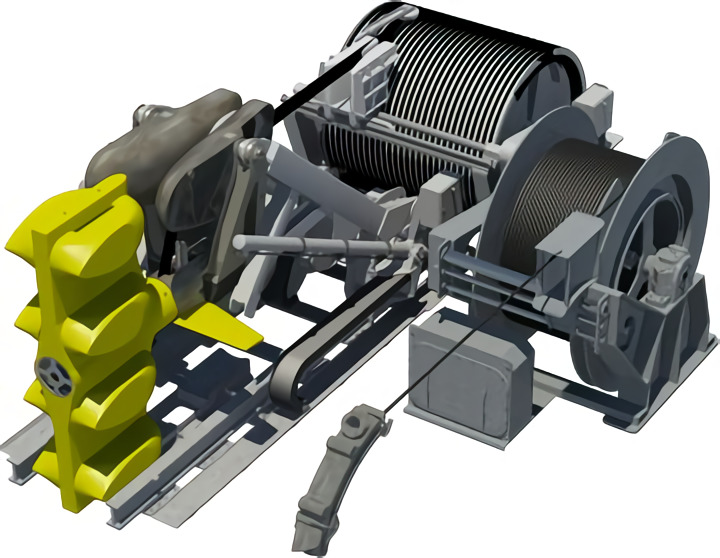
In active operation mode, the CAPTAS 4 sonar covers a frequency range between 0,95 and 2,1, while in passive mode, these range from 0,1 to 2 KHz, which guarantees a great range as this It is greater when the frequency is lower and vice versa. The towline and handling system have been designed to minimize problems due to surface layers. Finally, sophisticated algorithms are used to deal with the reverberation conditions of shallow coastal waters, such as with forward sonar.
The standard CAPTAS 4 sonar (UMS 4249) measures 2x1x1,2 (LxHxW) meters with a weight of 1250 kg. The towed array is 90 meters long and 85 mm in diameter with a combined weight of 2.490 kg. The handling system occupies 6,4×2,1×4,4 (LxHxW) meters with a weight of 15.000 kg. The UMS 4249 uses a four free flooded ring (FFR) omnidirectional vertical line array. The heavy tow cable is 264 meters long and the light cable is 500 meters long. Towed array sonar can be deployed or retrieved in 20 minutes and has a maximum towing speed of 30 knots[35].
In the Spanish case, the compact version of the CAPTAS-4 (S2807) has been chosen, presented at Euronaval 2016[36]. This implies a reduction in the total weight of the assembly of around 20%, as well as almost 50% in the case of the space required for its installation and operation compared to the ordinary variant.[37], which means going from 84 to 45 cubic meters. In other words, they have achieved that the CAPTAS-4 occupies the same volume as its little brother, the CAPTAS-2, with a view to its installation on frigates of the order of 4.000 tons (we will not enter into the hackneyed debate about whether the F-100, the F-100 or the FREMM deserve to be classified as frigates or, rather, as destroyers). Another interesting aspect is that the CAPTAS-4 cable can be released and retrieved without the need for human intervention, since it is not necessary for there to be operators in the stowage compartment, which will help in the objective of reducing personnel on board the frigates. F-110.
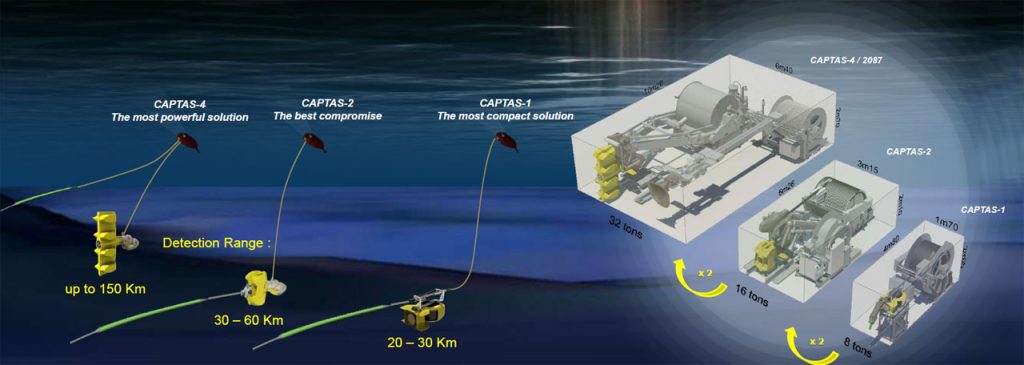
BlueScan system
The French company Thales is also responsible for supplying the BlueScan multi-platform signal processing system.[38], capable of managing the large volumes of information coming from both hull and towed sonar and even the cableable sonar of on-board helicopters. All this with the intention of providing the operator with a complete view of the acoustic situation in real time.
According to the manufacturer, BlueScan takes advantage of advances in Artificial Intelligence and Big Data to offer a tactical advantage to naval forces. That is, it is capable of analyzing each signal it receives from the different sensors in real time, processing it by discriminating its different characteristics, comparing it with those stored in its libraries and, where appropriate, displaying the results on the operator's screen.
As a curiosity, it is the name that the French manufacturer has chosen for a mobile game about anti-submarine warfare made in collaboration with the company Rubika.[39].
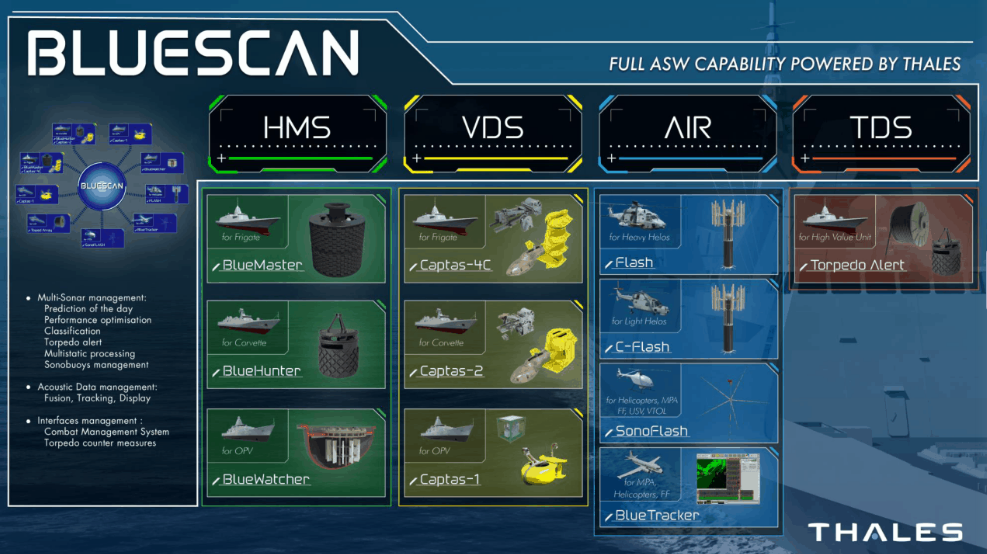
Sonobuoy Acoustic Processing System (SPAS)
As our readers undoubtedly know, since we explained it regarding the detection systems of the S-80 class submarines, the Cartagena company SAES is the only Spanish company capable of developing sonar and underwater acoustics capabilities in Spain. With a broad international presence, which it has consolidated in recent years, it is also an essential part of the major Spanish naval programs. Thus, in the case of the F-110 frigates and beyond the construction of the hull sonar after the agreement with Thales and the transfer of the associated technologies, it also provides several of the self-developed products that have managed to make a place for it in the foreign market. Among all of them, the Sonobuoys Acoustic Processing System stands out first, something in which SAES engineers have great experience, as they have mounted SPAS systems on P-3B/M Orion aircraft, SH-60 LAMPS helicopters or the Visby class corvettes, among others.

The SPAS system is a simple and intuitive tool to operate, whose main capabilities and components we will detail below. It should be noted that some of them, such as the powerful detection, identification, tracking, classification and analysis algorithms, the sonar performance prediction system and other tools and aids to the operator, are unique and exclusive to this system, differentiating it from other similar systems. and placing it at the forefront of the market. In the case of the F110, the acoustic subsystem is made up of two main components, namely:
- Sonobuoy Acoustic System (SAS): will be in charge of managing each and every one of the functions related to the sonobuoys used not only by the frigates, but also by the embarked helicopters. Between them:
- Integration into the SCOMBA Command and Decision System (SCDS) used by the F-110 frigates of the frigates' Acoustic Receiver Set (ARS) (also provided by SAES), which will allow communication with line-of-sight sonobuoys (LOS ). The control, processing and analysis of data collected by sonobuoys, both active and passive. The generation of detections and the monitoring of possible contacts. Provide ANM and BT type sonobuoy data for performance prediction. The recording and extraction of acoustic data (digital and audio), for subsequent printing and playback, as well as the extraction of data for training purposes and/or second-level intelligence analysis in a specific analysis center. The audio generation.
- Serve as an autonomous combat and training system.
- The L3Harris AN/SRQ-4 communications system[40]: will allow the integration of the sonobuoy receiver of the embarked helicopter into the SCDS. In this way, the AN/SRQ-4 will connect with the SCOMBA system to allow the Sonobuoy Acoustic System (SAS) to extract information from the sonobuoys launched by the aircraft and, if necessary, send them commands.
Among the capabilities of the SAS, it is worth highlighting the following:
- Complete integration with the SCOMBA system, so that in the ship's CIC they have at all times every data related to the contacts, their classification, the prediction of their future movements, the status of the sonobuoys and the objects to follow or the data audio.
- Data recording: all the tactical information generated, as well as the data acquired by the different sonobuoys during the ASW mission, are stored in digital recording equipment compatible with the STANAG 4283 standard. The objective is to be able to analyze and confirm the contacts on the ground. detected during the mission, as well as being able to detect other threats that may have gone unnoticed. Post-mission analysis work is essential in acoustic intelligence work in order to improve and update the threat database (ACINT).
- Remote configuration of sonobuoys.
- Automatic detection and contact tracing: When one or more of the deployed sonobuoys detect a possible threat, the SPAS system alerts the operator indicating which sonobuoy has made the detection. These mechanisms are based on a database of acoustic signatures and certain detection criteria, which can be consulted and modified by the operator during the mission. Localization support tools include: Target Motion Analysis (TMA), Kalman Filter, CPA (Closest Point of Approach), the possibility of establishing manual contacts generated by the operator and Automatic Cross Fixing (CFA).
- Training on board, both integrated with other detection elements installed on the frigates and in isolation.
- Multistatism between sonobuoys: Active and Active-Passive at low frequency.
For detection, the SAS system installed on the F-110 frigates, like those that the company has previously installed on other ships and aircraft, will allow different analysis modes depending on the type of sonobuoy deployed:
- Broadband analysis: shows the results, for each directional passive sonobuoy, in Bearing/Time/Amplitude (BTAI) and Bearing/Amplitude presentations. Additionally, and to facilitate threat location tasks, the system integrates broadband processing on a set of passive directional sonobuoys selected by the operator, displaying it on a passive energy plot.
- Narrowband analysis: the results are presented for each passive sonobuoy in frequency/time (LFI), frequency/amplitude (ALI) and bearing/frequency (BFI) presentations.
- Transient analysis: showing the results, for each passive sonobuoy, in frequency/time presentations (LFI).
- Demon and Double Demon Analysis: presenting the results for each passive sonobuoy of the Demon analysis in frequency/time presentation (LFI) and of the Double Demon analysis in frequency/frequency presentation (carrier/analysis).
- Processing of monostatic and multistatic CW and FM pings (for active directional sonobuoys): the SPAS system emits and processes pings of the CW, FM Up, FM Down and COMBO types, both in monostatic and multistatic modes. The results of the monostatic pings are displayed in Bearing/Range (BRI), Doppler/Range (DRI) and Amplitude/Range (ARI) displays. In multistatism, the SPAS Acoustic Subsystem integrates the processing of the multistatic ping associated with a group of active sonobuoys configured by the operator. The result of this processing is displayed on a multistatic tactical plot, favoring the location of the contact with high precision.
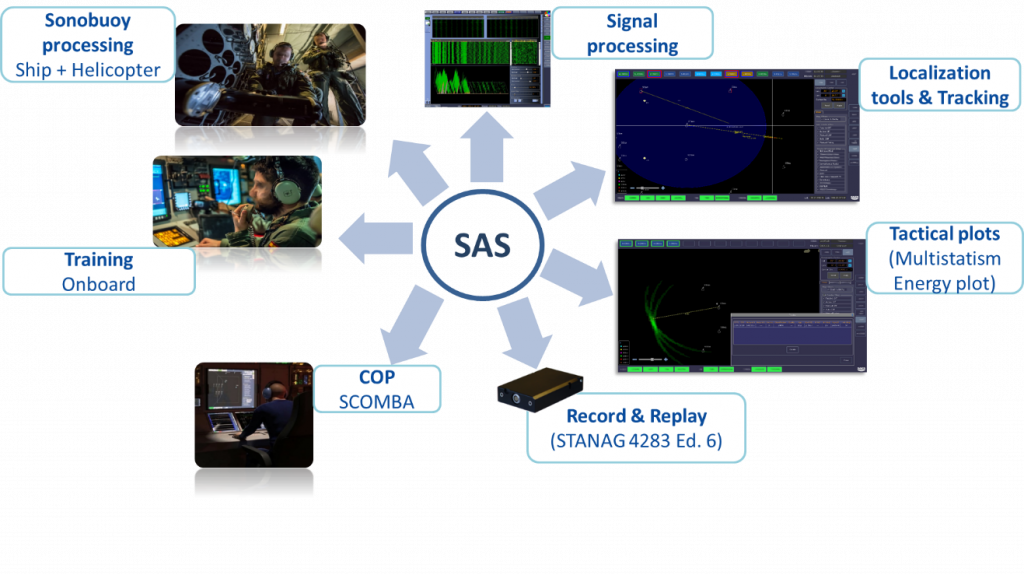
Acoustic Management System (AMS)
More importantly, if possible, the system that allows the data sent by the sonobuoys to be processed will be the AMS (Acoustic Management System) of the Navy's future F-110 frigates. On some occasions we have explained, for example regarding the S-80, that more important than a great detection capacity (that is, obtaining raw data), is having a library of signals that allows comparison between collected by the sensors and emissions previously captured, either in other missions of the ship itself, or by other surface ships and submarines. This is where the aforementioned Acoustic Management System comes in, which will have the following functionalities:
- Classification of detections provided by SBY and sonars (HMS and VDS): detected contacts may be compared with an intelligence database (ACINT) for classification purposes. The classification data will be stored in a database compatible with information from other Spanish platforms such as the S-80 submarine. This compatibility and possibility of working with ACINT (Acoustical Intelligence) from different platforms will be possible thanks to the commonality of the classification software provided by SAES. The company is also developing the acoustic intelligence data exploitation tool, EDIA.
- Location of probable contact detection areas using PEFP (Passive Energy Fusion Plot) and AEFP (Active Energy Fusion Plot): these graphs are generated from data from acoustic propagation models and detections received from SAS, merging in AMS with the energy passive and active received from SS (Sonar Suite), respectively. AMS will allow the acoustic operator to generate acoustic tracks from these PLOTs.
- Management of ANM and bathymetric data received from the Sonobuoy Acoustic System (SAS): provided by sonobuoy processing, and bathymetric data acquired from the OS Bathy unit. These data will be stored in a database managed by AMS.
- Multistatic operation between SBY and own ship's VDS sonar:
- Creation of multistatic networks.
- Management of sonobuoys belonging to the multistatic network.
- Synchronization of sonobuoy processing with the emission of pings.
- Monostatic and multistatic performance prediction to find the best network configuration for detection using monostatic and multistatic acoustic propagation models
- MSP (multistatic graph) generated from multistatic operation.
- Recording of Audio data received by the sonar suite during the mission.
In addition, and as was the case with the SAS, the AMS will also allow acoustic operators to receive training on these functionalities.
- Integration with SCOMBA: contacts, classification, prediction, status, audio…
- Integration with Sonar Suite (ISS): contacts, classification, recording…
- Signal processing from sonobuoys, VDS sonars and HMS for ACINT generation.
- ACINT management.
- Environmental data management: bathythermal, ambient noise, bottom, sea state...
- Fusion of energy maps: VDS+HMS+Sbys
- Sbys Multistatism – O/S VDS
- Multistatic planning tools.
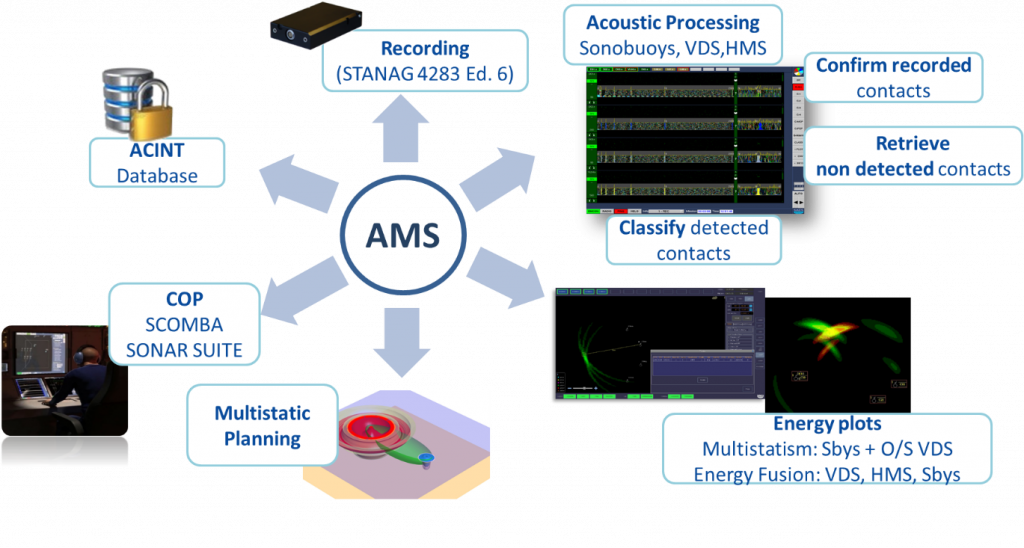
Another very interesting aspect of AMS is its ability to merge energy plots and represent information on the ship's geographic plot, as shown in the images you can find below. In this way, the energy levels will be merged with the rest of the tactical information (detections, tracking, tools...) and will be displayed on a scale of color tones:
- Orange for sonobuoy detections;
- Green for sonars (HMS and VDS) and;
- Blue for VDS-VDS multistate events.
This capability is implemented through the Passive Energy Fusion Plot (PEFP) and Active Energy Fusion Plot (AEFP) tools.
Even more interesting is the ability to operate in various modes, including traditional monostatic, bistatic and multistatic, which is undoubtedly the future in terms of underwater acoustic detection.. Since not everyone should know what each of them is, we could roughly summarize them as follows:
- Monostatic: echo transmission and reception occur on board the same unit (sonar equipment). Two or more monostatic systems that act independently of each other in the same area of operations are called multi-monostatic. Systems can share command-level contacts over existing links, such as Link 11.
- Bistatic: It is used when one naval or air unit transmits acoustic energy (for example, sonar, sonobuoy, explosive charge...) while a second is responsible for receiving the target echoes generated by the transmission. Two or more bistatic systems that act independently of each other in the same area of operations are called multi-bistatic.
- Multistatic: In this case, one or more units transmit and other units (possibly including the transmitting units) receive the echoes generated by those transmissions. Through a communications link they share low-level contact data for fusion, which is carried out by a multistatic sonar processing engine, for example).
The following table shows the combinations between sonars and sonobuoys working in mono-static and multi-static modes:
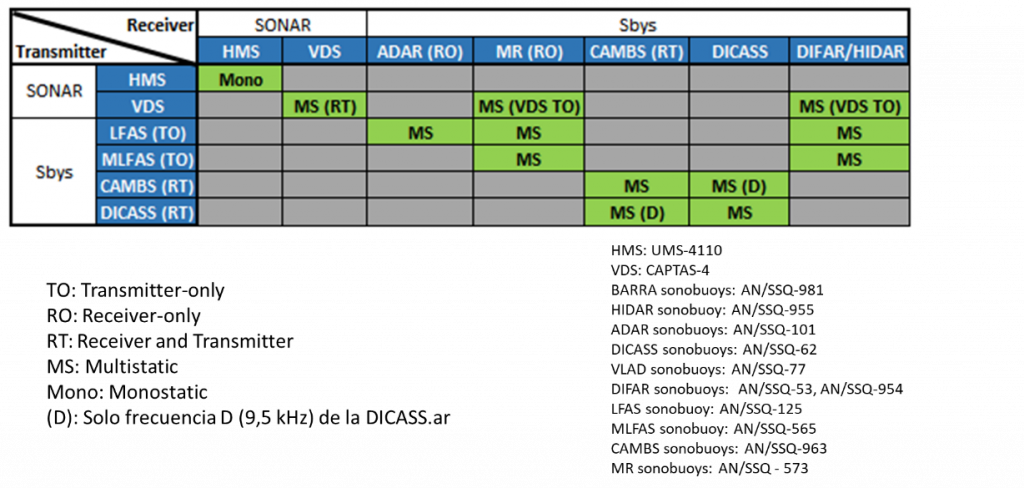
In the case of the F-110 frigates, since all the processors are installed on the same platform, multistatism is simplified since the same time reference is available and the communications are wired - with the logical exception of the sonobuoys, which in any case are received through the data link.
Let us not forget that no matter how simple it may seem on paper, from the moment in which instead of one sensor there are two or more those involved in the equation, to which is added the acoustic management system itself, the exchange of messages between all They become more complicated and new problems come into play such as latencies, adaptation of processes to other waveforms, etc. All in all, the F-110 will be able to take full advantage of the main advantages of multistatism, which we could summarize as:
- Reduction of acoustic emissions
- Improved contact location and classification
- An increase in spatial coverage, which goes beyond what each of the systems can provide separately.
- It keeps the receiver-only (RO) platforms hidden, since those best located - or expendable - can be used to emit pings, while the most valuable ones, such as the frigate itself, are kept listening.
- Although monostatic sonar (RT) can receive the echo from the worst aspect of the contact, other receivers will receive the echo from a better aspect, allowing an optimal image of it to be formed.
All of which will provide the F-110 frigates with capabilities when it comes to locating enemy submarines, unparalleled in the history of the Navy and that will have nothing to envy of the navies around us.
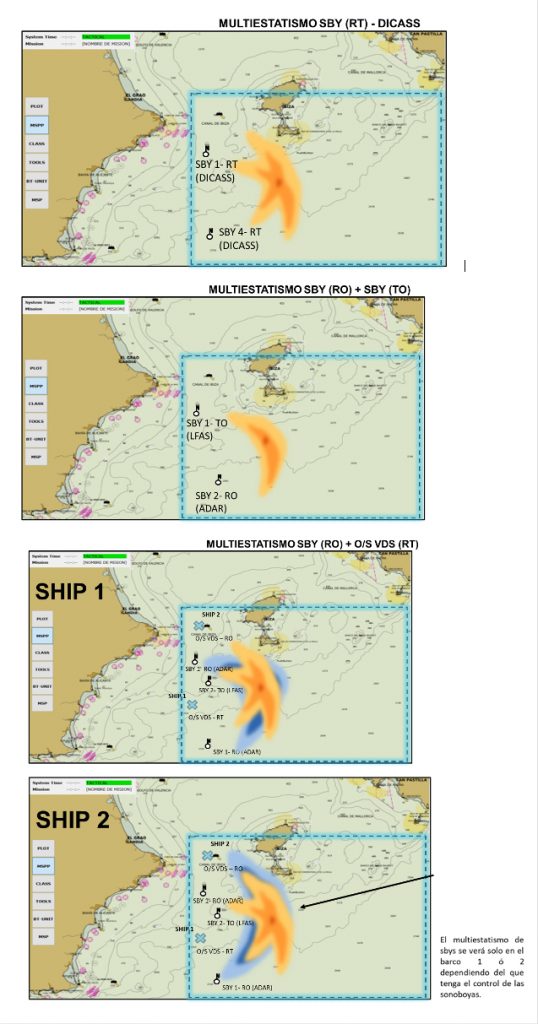
Other systems and technologies related to anti-submarine warfare and F-110 frigates
The underwater electric field produced by a ship can be detected with a range comparable to any other ship's influence signature.[41]. This is why SAES has also been entrusted with the control of the electric field signature, both static and alternating, something that has been carried out since the definition phase of the vessel.
During this, the sources of the electric field are identified, which for a surface ship are basically the currents generated by the ICCP (Impressed Current Cathodic Protection) system, the elements of different materials in contact with the water and any rotating element that is capable of radiating an alternating electrical signature.
Once the sources have been identified, the electrical signature generated by each of them is estimated, both separately and jointly. Furthermore, to control the alternating electrical signature, it is necessary to identify the main frequencies of rotating machines with the capacity to radiate alternating electric fields. Subsequently, in order to control and mitigate the electrical signature, criticality indices are established for each source and mitigation and monitoring actions for each of them based on the level of said index, as represented in the scheme that we share. next.
In addition to the above, in July 2021, Thales began production, under a contract signed in December 2019, of the TUUM-6 underwater communication system, one of the components of the integrated set of sonars and acoustic systems that will be mounted on the frigates. F-110[42]. Unlike other systems, licensed to third parties, in this case Thales Spain itself will be in charge of manufacturing at its facilities in Leganés.
On the other hand, to materialize the construction of the helmet sonar, although this has nothing to do with the capabilities of the F-110, but rather with industrial returns, a new 400 square meter facility has been built in La Palma between June 2020 and May 2021, with the installation of equipment being completed in March 2022. In this facility, the arrays will be manufactured, each with its 480 transducers, each grouped in 5 half-staves of 96 units.
The new plant has a 16 t bridge crane, a 10x8 meter acoustic tank with another 8 meters deep and different areas for manufacturing, storage or measurement. If everything goes as planned, they will be able to manufacture up to 15 transducers a week, although capacity could be increased to 30 if necessary.
The important thing about this facility, speaking of the interests of Spain, is that there are very few companies in the world capable of producing this type of components, which opens up the opportunity to capitalize on the investment not only by producing to meet the needs of the Navy, but for the contracts that SAES may obtain in the future abroad.

embarked helicopter
A frigate like the future F-110 has, as is derived from everything we have been explaining, an important capacity based on its own sensors, with regard to locating submarines that may be operating in its environment. However, it cannot do without the air element that provides it not only with greater coverage, but also with the possibility, if necessary, of investigating the most suspicious contacts and, if necessary, even attacking them with torpedoes launched from the air.
In relation to this, the F-110 frigates will initially use an MH-60R helicopter supposedly as a prelude to the future NH90 HSPN ASWs, which may never arrive. It is precisely due to Airbus delays that the Navy has been forced to turn again to the United States - although this has always been their preference, which they have never hidden - to acquire eight Sikorski MH-60R helicopters, spare parts and numerous equipment, which includes four calable sonars, as well as various types of sonobuoys, all for 950 million dollars[43].
The “Romeo” are multipurpose embarkable helicopters, powered by two General Electric T700-GE-401C engines, each with 1.800 horsepower. Although its first flight dates back to July 2001 and its first operational deployment took place in January 2009, it has not stopped updating, nor improving aspects such as the avionics or the mission system, provided by Lockheed Martin. Thus, the cockpit has four 8x10-inch (20,3 x 25,4 cm) full-color screens. The communications suite is the Rockwell Collins AN/ARC-210, while Northrop Grumman has provided the LN-100G dual navigation system (INS/GPS).[44]. The multiple sensors include a Raytheon AN/AAS-44C(V) FLIR and a Telephonics AN/APS-147 or AN/APS-153(V) radar. It also includes different countermeasure systems.
For what we are concerned with here, both its choice and that of its capable sonar will allow the Navy to continue interacting with those of the main allies on equal terms for many years. Not in vain, from the US Navy to the Royal Australian Navy or the French Marine Nationale, there are many top-level navies that have opted, if not for this device, then for some of the ASW equipment it mounts, the most important being sonar. AN/AQS-22 ALFS (Active Low Frequency Sonar) from Raytheon. This is actually the FLASH from the French Thales produced under license. A system that is already certified in the MH-60R, obviously, but also in the NFH90 “Caiman”[45], so there would be no problem if you decided to change platforms in the future.
Regarding the load capacity and regarding exclusively anti-submarine warfare, which is what interests us, the “Romeo” can carry 3 MK 50 torpedoes and up to 25 sonobuoys of various types.
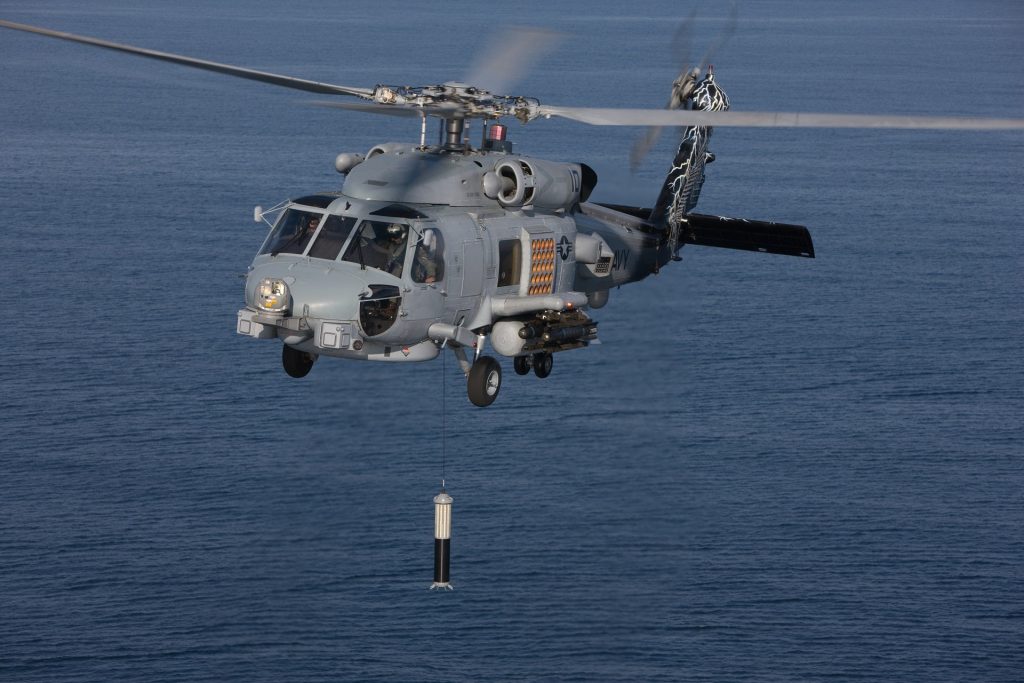
Anti-submarine weapons and countermeasures of the F-110 frigates
After talking about the detection and signal processing systems and even the air wing, it is necessary to talk about the anti-submarine weapons that the class ships will carry. Bonifaz. Among all the panoply, the one intended for ASW is relatively scarce, although sufficient in number and of proven capacity, the F-110 frigates mounting two fixed double MK-32 Mod. 9 launchers. for MK-54 torpedoes, about which we will not go into much detail, since we already explained everything necessary in a specific article[46].
The latter, developed from the guidance system and warhead portions of the MK-50 in combination with the MK-46 propellant, offer great performance in shallow water, as well as a reasonable cost. They have been in service since 2004, achieving a significant number of sales abroad since then.
With a length of 2,71 meters and a diameter of 320mm, its mass is 276 kilograms of which 44,6 belong to the warhead. Regarding their performance, they are capable of reaching a maximum speed of 45 knots at 500 feet (150 m) that drops to 40 knots at 1.500 feet (457 m). Its range reaches 11,1 km at 50 feet of depth (15 m), being only 5.6 at 1.500 feet (45 m).
Curiously, at the moment the use of ASROC (Anti Submarine Rocket) has not been chosen, which would allow the range of these torpedoes to be increased substantially, entrusting the long-distance attack to the onboard helicopter. Apparently, the intention was to avoid an increase in displacement and cost, as well as complicate the support of the ship, discarding the idea at a very early stage of the design. However, it could be implemented in the future, if it is decided to do so.[47].
Regarding countermeasures, the F-110 frigates will use a Pairie-Masker masking system[48], which generates a curtain of bubbles around the hull that distorts the speed of the sound emitted by the ship towards the outside, making it difficult to classify the radiated noise by enemy detection systems[49].
Regarding the lures, The well-known AN/SLQ-25 Nixie will be used, used by both the US Navy and a good number of allied navies. It is a device that generates signals similar to those emitted by the ship in its ordinary operation and that is dragged at a safe distance from the ship so that enemy torpedoes that operate in passive mode confuse the target.
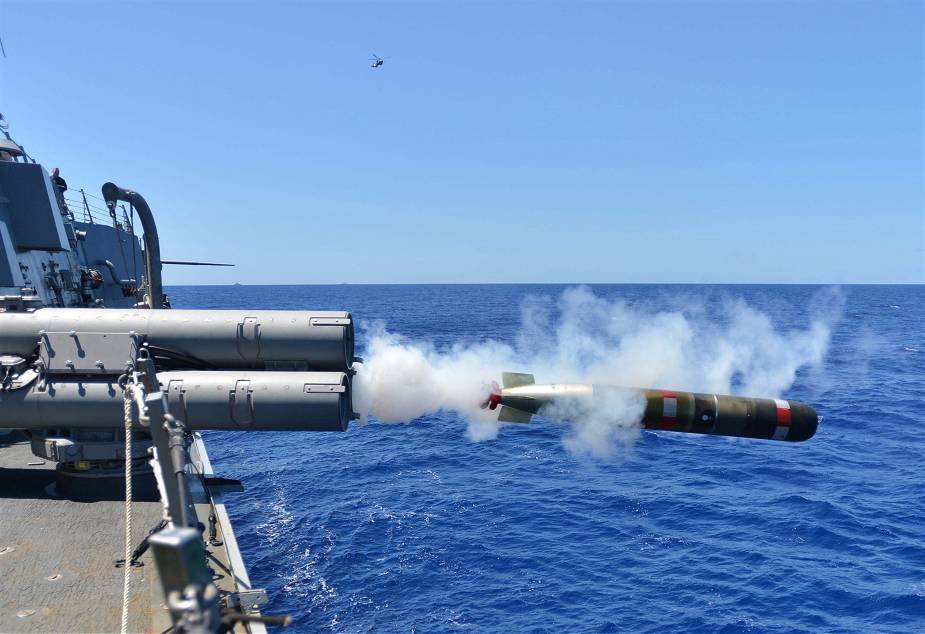
Conclusions
On paper, since construction is just beginning, the class frigates Bonifaz They will be the most capable ships in terms of their anti-submarine aspect that the Navy has ever had in its long history. The choice of the various systems leaves no room for doubt, since the best that the market can offer has been chosen.
Even more important is that a high degree of nationalization and transfers has been achieved in the case of foreign systems, which will allow the native industry to continue developing in the future, based on what has been learned.
Although there are still some aspects to be finalized, such as the future use of ASROC or whether the “Romeo” will finally be replaced by the specific variant of the NH90, the issues are good and the F-110 frigates will allow us to recover a critical capacity that Today, the F-80s in the state they are in cannot meet guarantees.
Now, not everything is positive, despite the steps taken in recent months. The general situation of the Spanish Armed Forces, as far as anti-submarine capabilities are concerned, remains critical, especially in the air domain. Without a short-term replacement for the P-3 – of which the last one was decommissioned on December 16 – we only have to wait for the Ministry of Defense to purchase four C-2023 MPA in 295. .
However, it will still not be enough. To maximize control over the Balearic-Strait-Canary Islands axis, as well as to comply with international commitments, it must be complemented with more manned and unmanned devices, with fixed listening systems installed on the seabed and also with more ships. with significant ASW capabilities. Whether or not the series of F-110 frigates is extended, the necessary equipment must be installed in the F-100 MLU to make them more versatile ships, with an eye toward anti-submarine warfare. The same could be done, since there are very compact systems such as CAPTAS-2, with some of the BAM or with future EPC corvettes, which could install a towed sonar in a mission module instead of resorting to a fixed mount.
Be that as it may, Spain, given its responsibilities, its potential and the growing threats, cannot leave aside an area that it has already neglected for a long time. Some of the bugs have begun to be fixed, but there is still a lot of work to do.
Bibliography and sources
[1] Villanueva-López, C. (2018). Third Offset Strategy. Prelude to a military revolution? Armies, 4. https://www.revistaejercitos.com/2018/07/16/third-offset-strategy/
[2] Palacios, A. (May 10, 2022). The impact figures of the F-110 frigate: 4.320 billion investments, 500 companies and 9.000 jobs. The debate. https://www.eldebate.com/espana/defensa/20220510/cifras-vertigo-fragata-f-110-4-320-millones-inversion-9-000-empleos.html
[3] Hernández, V. (2022). Sheet metal cut from the first F-100. Spanish Defense Magazine, May, 46-47. https://www.defensa.gob.es/Galerias/gabinete/red/2022/05/p-46-47-red-394-f110-.pdf
[4] Government of Spain (April 6, 2022). Intervention of the President of the Government at the start of construction of the F-110 frigates for the Navy [Transcript]. https://www.lamoncloa.gob.es/presidente/intervenciones/Documents/2022/220406%20TRANSCRIPCIÓN%20PG%20ACTO%20NAVANTIA.pdf
[5] Conte de los Ríos, A. (2022). The future of the Navy and the Defense Industry. Armies, 43. https://www.revistaejercitos.com/2022/12/12/el-futuro-de-la-armada-y-la-industria-de-defensa/
[6] Well, G. (2012). This is how the new F-110 frigate is designed. Spanish Defense Magazine, September, 42-45.
https://www.defensa.gob.es/Galerias/documentacion/revistas/2012/red-287-fragata-f110.pdf
[7] González-Aller, J. (2014). F-110 frigate, our future. General Navy Magazine, December, 915-927
https://armada.defensa.gob.es/archivo/rgm/2014/12/cap07.pdf
[8] Carrasco, B. and Cancio, F. (July 21, 2020). The coronavirus delays the launching of the first S-80 submarine. The reason. https://www.larazon.es/espana/20200521/ezokusqy4ncz7bhdxwkinuzwyy.html
[9] Navantia. (May 21, 2021). The F-110 program successfully passes its Preliminary Design Review.https://www.navantia.es/es/actualidad/notas-prensa/el-programa-f-110-supera-con-exito-su-revision-de-diseno-preliminar/
[10] Ministry of Defence. (June 24, 2022). F-110 program. CDR critical design review. https://www.defensa.gob.es/comun/slider/2022/06/DGC-220624-navantia.html
[11] Navantia. (May 5, 2021). Flag installation of the Ground System Integration Center building for the F-110 frigates. https://www.navantia.es/es/actualidad/notas-prensa/puesta-de-bandera-del-edificio-del-centro-de-integracion-de-sistema-en-tierra-para-las-fragatas-f-110/
[12] The voice. (May 7, 2021). The construction of the ground replica of the F-110 mast advances in Ferrol. The voice of Galicia. https://www.lavozdegalicia.es/noticia/ferrol/2021/05/07/avanza-construccion-ferrol-replica-tierra-mastil-f-110/0003_202105F7C4993.htm
[13] Villanueva-López, C. (2020). Naval arms race in the Western Mediterranean. Armies, 18.
[14] Pulido, G. (2019). Strategic stability. Towards an increasingly unstable and unpredictable future. Armies, 9. https://www.revistaejercitos.com/2019/06/02/estabilidad-estrategica/
[15] Conte de los Ríos, A. (2020). Naval War in the Strait of Gibraltar. A not so remote possibility. Armies, 18. https://www.revistaejercitos.com/2020/11/01/guerra-naval-en-el-estrecho-de-gibraltar/
[16] Pérez, J. (2020). Recover the Balearic-Strait-Canary Islands axis. An urgent need. Armies, 18. https://www.revistaejercitos.com/2020/11/01/recuperar-el-eje-baleares-estrecho-canarias/
[17] Defense Policy Directive, Official Gazette of the Ministry of Defense, 159, of August 6, 2020. https://www.defensa.gob.es/Galerias/defensadocs/directiva-politica-Defensa-2020.pdf
[18] Defense Staff. (2021). Concept of Employment of the Armed Forces 2021. Defense Staff. https://emad.defensa.gob.es/Galerias/emad/files/CEFAS_2021.pdf
[19] Ivan, E. (2021). Maritime patrol in Spain (I). Brief historical introduction. Armies, 22. https://www.revistaejercitos.com/2021/03/08/la-patrulla-maritima-en-espana-i/
[20] Pulido, G. (2019). Morocco, the Canary Islands and the Exclusive Economic Zones (EEZ). Armies.
[21] Announcement of formalization of contracts of the General Directorate of Armaments and Material. Object: Feasibility study of the integrated Mast/Superstructure for the future F110 Frigate.- Program SEN21102. File: 1003011002900, dated December 29, 2012. Official State Gazette, 1, of January 2, 2012. https://www.boe.es/diario_boe/txt.php?id=BOE-B-2012-64
[22] Ministry of Defence. (April 8, 2019). Administrative contract modification document “Development and integration of sensors on mast-SCOMBA F-100”. File no. 1003215005900. https://contrataciondelestado.es/wps/wcm/connect/9bf79cb5-5e3c-49a6-9187-a8aa1084f983/DOC201904101312532019+04+08+DOC+ADM+MODIF+9+PARA+PUBLICAR.pdf?MOD=AJPERES
[23] Villarejo, E. (2020). The BONIFAZ Class Frigate (F-110) – the Future Backbone of the Spanish Armada. Maritime Security & Defense, October, 17. https://msd-mag.com/wp-content/uploads/2021/02/MSD-01-2020_web.pdf
[24] Thales. (sf). Hull Mounted Sonars. https://www.thalesgroup.com/en/markets/defence-and-security/naval-forces/underwater-warfare/bluescan/hull-mounted-sonars
[25] Villanueva-López, C. (2022). The S-80 Program – The combat system (I). Armies, 42. https://www.revistaejercitos.com/2022/11/28/el-programa-s-80-el-sistema-de-combate-i/
[26] Thales. (December 12, 2019). The Thales sonar system selected for the new multi-mission frigates of the Spanish Navy [Press release]. https://www.thalesgroup.com/es/group/press-release/el-sistema-sonares-thales-seleccionado-para-las-nuevas-fragatas-multimision
[27] Powis, G. (April 2, 2022). The US Navy finally chooses the European CAPTAS-4 sonar for its operations. Air & Cosmos. https://air-cosmos.com/article/l-us-navy-choisit-finalement-le-sonar-captas-4-europeen-pour-ses-fregates-28972
[28] Thales. (sf). Thales UMS 4110. https://es.scribd.com/document/361996004/Thales-UMS-4110
[29] https://docplayer.fr/52224160-Thales-a-bord-des-fregates-fremm.html
[30] Thales. (March 4, 2020). Thales à bord des Frégates FREMM. http://calderon.cud.uvigo.es/bitstream/handle/123456789/428/González%20del%20Tánago%20Land%C3%ADn%2C%20José%20Luis%20-%20Memoria.pdf?sequence=1&isAllowed=y
[31] Vavasseur, X. (February 10, 2022). US Navy Looks Again At VDS Options For New Frigate. NavalNews. https://www.navalnews.com/naval-news/2022/02/us-navy-looks-again-at-vds-options-for-new-frigate/
[32] Thales. (sf). CAPTAS Family. https://www.thalesgroup.com/en/markets/defence-and-security/naval-forces/underwater-warfare/bluescan/captas-family
[33] Supervielle, F. (2020). CAPTAS-4. The sonar of the future F-110 frigates and underwater acoustics. Armies. https://www.revistaejercitos.com/2020/01/02/captas-4/
[34] Ibid.
[35] Deagel. (sf). UMS 4200 CAPTAS. https://www.deagel.com/Sensor%20Systems/UMS%204200%20CAPTAS/a002134
[36] Roa, A. (October 21, 2016). Thales designs a compact version of its 'Captas-4' sonar. Infodefense. https://www.infodefensa.com/texto-diario/mostrar/3078387/thales-disena-version-compacta-sonar-captas-4
[37] Nugent, B. (2017). Naval ASW Sonar Review. European Security & Defense, August, 74-78. https://amiinter.com/pdf/NavalASWSonarReview.pdf
[38] Government of Spain. (June 29, 2021). Thales reinforces its industrial capabilities in Spain. https://www .investinspain.org/content/icex-invest/es/noticias-main/2021/thales-espana.html
[39] Thales. (February 11, 2022). Bluescan, the Game.https://www.thalesgroup.com/en/worldwide-defence-naval-forces/underwater-warfare/magazine/bluescan-game
[40] L3Harris. (sf). CDL Hawklink AN/SRQ-4 Radio Terminal Set. https://www.l3harris.com/all-capabilities/cdl-hawklink-an-srq-4-radio-terminal-set
[41] Submarine Electronics (SAES). (s.f.). SET-200/P – Underwater Electric Field Sensor. https://electronica-submarina.es/medicion-submarina/sensor-campo-electrico-submarino/
[42] Thales. (June 16, 2021). Thales strengthens its industrial capacity in Spain due to production start-up of the TUUM-6 Underwater Digital Communication System. https://www.thalesgroup.com/en/spain/news/thales-strengthens-its-industrial-capacity-spain-due-production-start-tuum-6-underwater
[43] Defense Security Cooperation Agency. (March 15, 2022). Spain – MH-60R Multi-Mission Helicopters with Support [Press release]. https://www.dsca.mil/press-media/major-arms-sales/spain-mh-60r-multi-mission-helicopters-support
[44] Forecast international's Aerospace Portal. (sf). MH-60R Seahawk. http://www.fi-aeroweb.com/Defense/MH-60R-Seahawk.html
[45] Thales. (s.f.). Low Frequency Diving Sonars for Helicopters. https://www.thalesgroup.com/es/markets/defence-and-security/naval-forces/underwater-warfare/bluescan/familia-flash
[46] Conte de los Ríos, A. (2022). The evolution of torpedoes. Armies, 35. https://www.revistaejercitos.com/2022/04/19/la-evolucion-de-los-torpedos/
[47] González del Tánago, A. (2018). The F-110 frigate, a bet for the present and the future. General Navy Magazine, April. https://armada.defensa.gob.es/archivo/rgm/2018/04/rgm042018cap08.pdf
[48] Warships. (November 24, 2018). Fridtjof Nansen Class Frigates. https://www.buquesdeguerra.com/es/buques-armada-espanola/fragatas/fragatas-f-110/tag/AEGIS.html
[49] Prairie-Masker (October 31, 2022). In Wikipedia. https://en.wikipedia.org/w/index.php?title=Prairie-Masker&oldid=1119306687


Excellent and very complete article.
I totally share your conclusions.
All the best
Thank you!
Brutal work, congratulations.
Thank you!